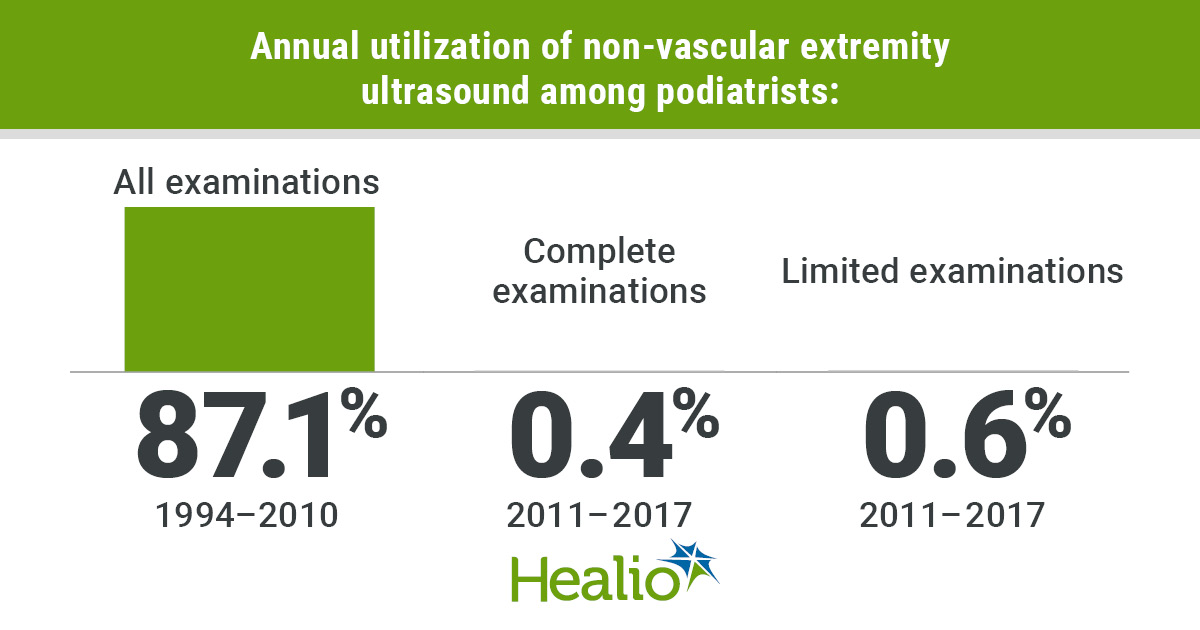Ultrasound use slowed among podiatrists after CPT code separation
Following the CPT code separation for use of non-vascular extremity ultrasound, published results showed prior rapid growth in use among podiatrists decreased while a steady increase in use continued among radiologists.

To assess the association of the billing code separation on non-vascular extremity ultrasound utilization, with attention to specialty-specific variation, Robert J. French Jr., MD, assistant professor of radiology at Duke University School of Medicine, and colleagues used the physician/supplier procedure summary master files to identify all non-vascular extremity ultrasound services billed for Medicare fee-for-service beneficiaries between 1994 and 2017. Researchers included generic, complete and limited examinations in their assessment of non-vascular extremity ultrasound services. Researchers computed annual utilization per 100,000 beneficiaries and stratified them by billing specialty, as well as calculated compound annual growth rates.
Results showed the top two billing specialties for non-vascular extremity ultrasound examinations included radiology and podiatry. Researchers found a 6.1% and 87.1% annual increase in radiologist and podiatrist services, respectively, from 1994 to 2010. Following to 2011 CPT code separation, ultrasound use for complete exams increased 2.7% annually for radiologists while utilization growth stabilized 0.4% for podiatrists, according to results. For limited exams, researchers noted an increase of 12.3% among radiologists and a growth stabilization of 0.6% for podiatrists.
Results also showed increased annual use from 1994 to 2017 among rheumatology (31.5%), orthopedic surgery (26.5%), primary care (11.9%), and physical medicine and rehabilitation (24.1%) but decreased annual use among other surgery groups (-1.1%). Among site-of-service categories, researchers noted the office setting had the largest annual utilization increase of 14.7% compared with 7.2% in the hospital outpatient department and 3% in the inpatient setting.

Although radiology maintained the largest market share of any of the specialty categories throughout the study, researchers found the market share for radiologists decreased from 72.8% to 40.4% between 1994 and 2017. In comparison, the market share for podiatrists was 9.1% in 2001, peaked at 31.3% in 2009 and declined to 14.3% in 2017, according to results.
“The creation of two separate codes distinguishing complete from less-costly limited examinations slowed the growth rate of non-vascular extremity ultrasound,” French told Healio Orthopedics. “This impact was far more striking at the level of individual specialties, which suggests that regulatory action can be a strong driver in physician behavior and influence patient care.” – by Casey Tingle
Disclosures: French reports no relevant financial disclosures. Please see the study for all other authors relevant financial disclosures.
